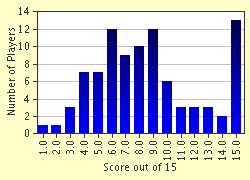Quiz Answer Key and Fun Facts
1. What rare woodland member of the buttercup family was used as a violent purgative for people with worms, the use of which was abandoned when it was noticed that more often than not, the cure killed the patient?
2. A favourite flower of William Wordsworth, the Lesser Celandine was used by the seventeeth century herbalist Nicholas Culpeper to cure his daughter of the 'King's Evil', Scrofula: True or False?
3. The common name of this yellow flowered plant derives from the ancient Greek word meaning 'antidote to poisonous bites' a job for which it is highly effective.
4. Which five petalled yellow flower has genuine aniseptic powers when laid over wounds?
5. Which plant is commonly used in history and lore to raise ghosts, exorcise spirits and lift curses?
6. Which pink flowered plant was used as an anti-aphrodisiac and hangover cure?
7. Herb Bennet used to be considered to be one of the most powerful charms against evil and was hung over doors to prevent the Devil from entering a house: True or False?
8. A potion made from this plant was used in judicial executions in ancient Greece.
9. What member of the dock family was thought to retard the growth of children and was described by Shakespeare in A Midsummer Night's Dream as 'hindering'?
10. Which member of the forget-me-not family was used in medieval times to set bones in the manner of plaster of Paris?
11. Which of these members of the figwort family is used to treat scrofula (also known as the King's Evil)?
12. Marsh Woundwort is highly toxic when it comes into contact with cuts: True or False?
13. The juice of which pink flower's roots was used to calm people down during air raids in World War One?
14. Which flower is used to produce the heart drug, digitalis?
15. The name of Devil's-bit Scabious stems from the legend that the Devil's horse shook off its reins and went mad when it ate the brown spotted leaves and yellow flowers of this plant: True or False?
Source: Author
Flapjack44
This quiz was reviewed by FunTrivia editor
crisw before going online.
Any errors found in FunTrivia content are routinely corrected through our feedback system.

